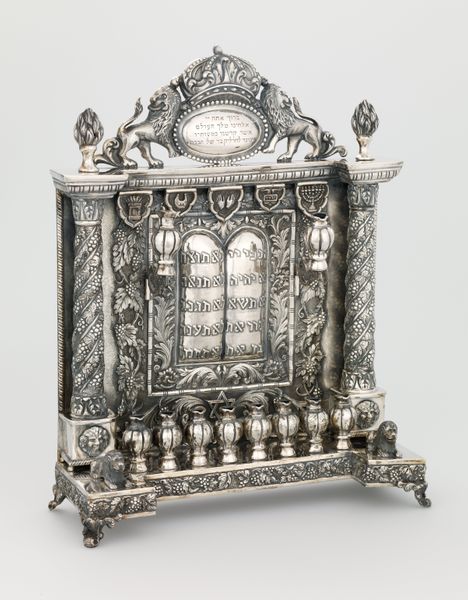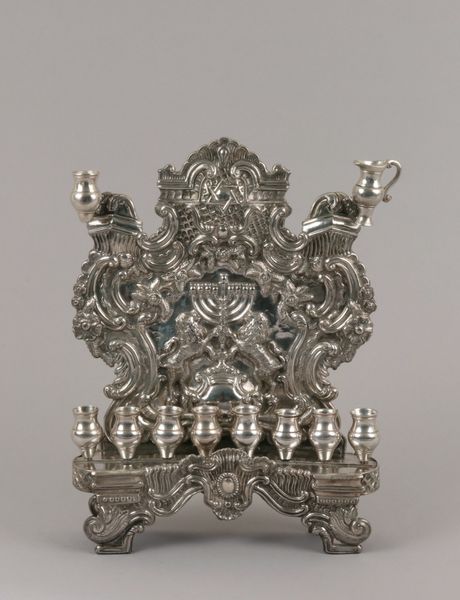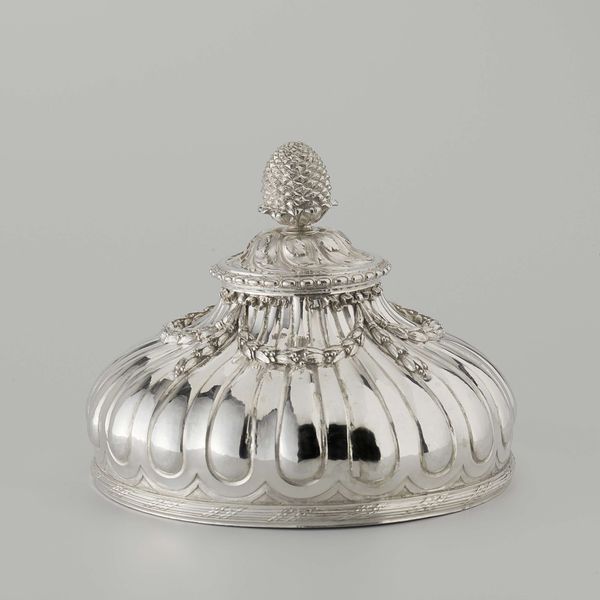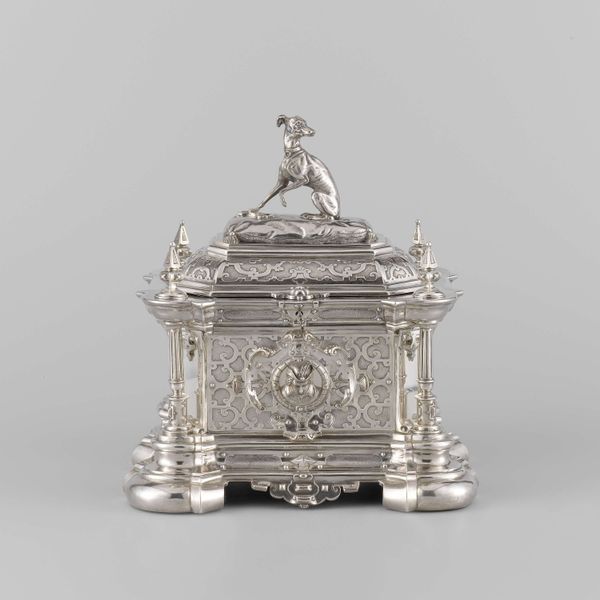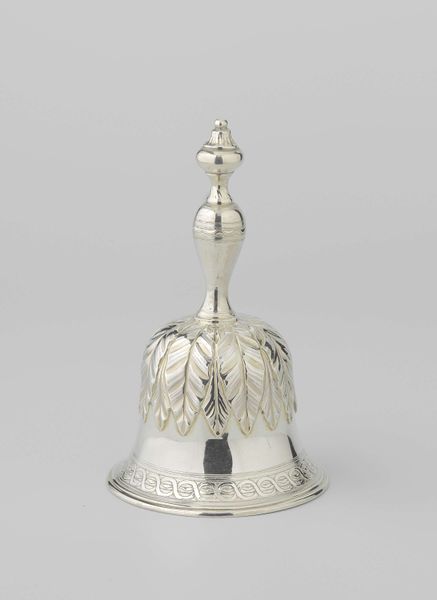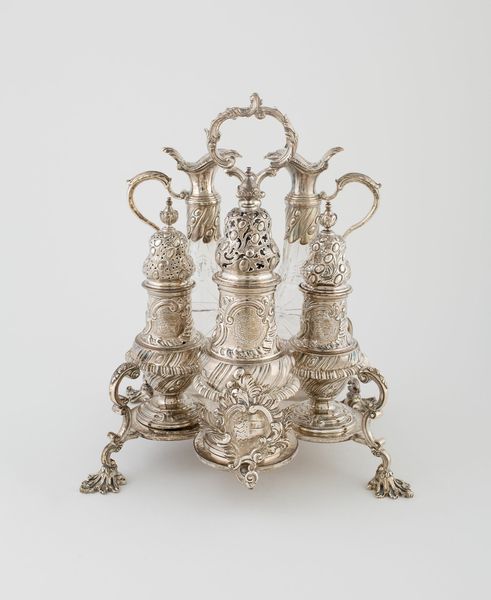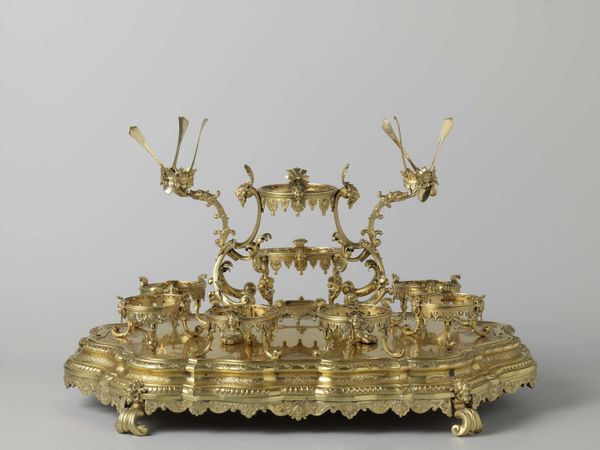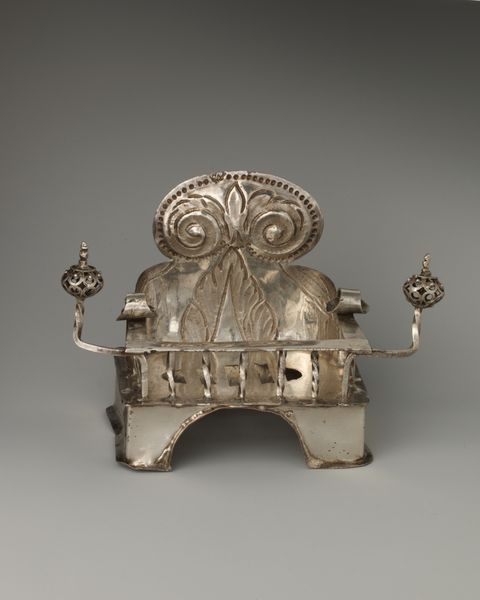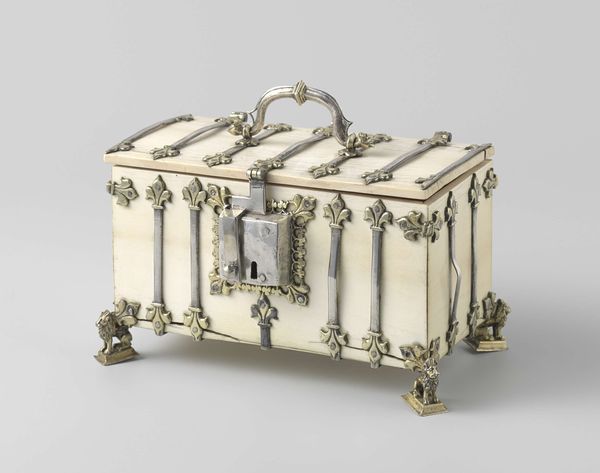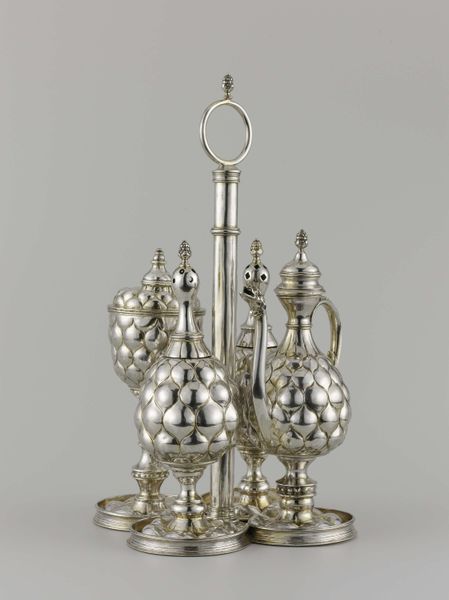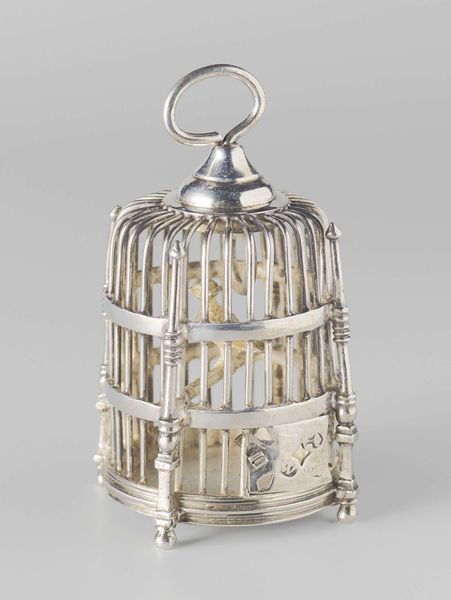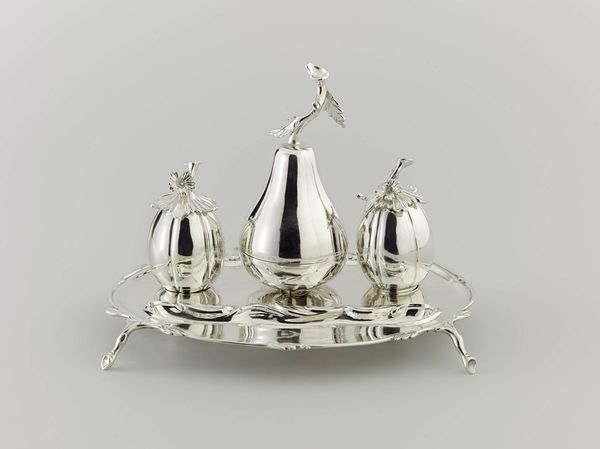
ornament, silver, metal, sculpture
#
ornament
#
silver
#
metal
#
sculpture
#
decorative-art
Dimensions: 8 5/8 x 8 3/8 x 2 7/16 in. (21.91 x 21.27 x 6.19 cm)
Copyright: Public Domain
Curator: Before us, we have a Hanukkah lamp, crafted around 1880, part of the Minneapolis Institute of Art’s collection. It's presented as a silver sculpture. Editor: It certainly radiates a regal aura, doesn't it? A solemn beauty wrought from metal. Curator: Precisely! Notice how the silversmith elevated an everyday object through meticulous detail. From the repetitive shaping of each sconce for the lights, to the embossed surface decorations of columns and flames. It really elevates the craftsmanship beyond simple utility. Editor: Yes, the iconography is rich here. Those birds above the light holders—doves perhaps, symbolizing peace and deliverance—and the crown that centers them. There’s a whole visual vocabulary at play expressing faith. Curator: The artist here, who remains anonymous, utilizes mass production, likely stamping techniques for some aspects of the ornamentations and motifs of flames atop ionic columns. The material realities are the driving factor here. The metal itself, its malleability and permanence, its availability for trade within a certain community, speak to something. Editor: Certainly. I see cultural continuity as well. The flame as a symbol stretches back millennia, and to see it given renewed significance through decorative work reflects how people revive enduring ideas. It has stood the test of time to this very day. Curator: It also indicates cultural exchange in the 19th century through the commodification of religious articles. This Hanukkah lamp acts almost as an intersection between material culture and religious practice. It also reflects the shifting roles of artisans responding to both a devotional function, but with available materials and changing modes of manufacture and consumer demands. Editor: So, while you highlight the how and what, I’m drawn to the why and the what it represents over time. Both elements help to provide a fuller appreciation of this religious object. Curator: Precisely, considering labor practices and available techniques expands on the symbolic meaning it carries through the years. Editor: Absolutely! Now, it has given me a much deeper consideration of what has passed from artisan, to devotee, to ourselves, so that it is both appreciated aesthetically, and held within a cultural history.
Comments
No comments
Be the first to comment and join the conversation on the ultimate creative platform.
